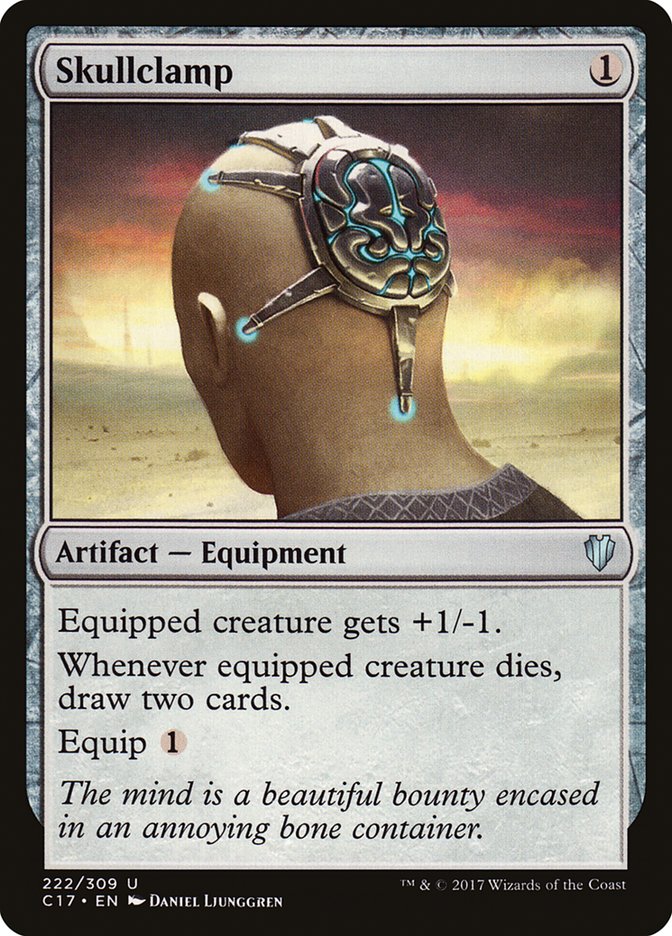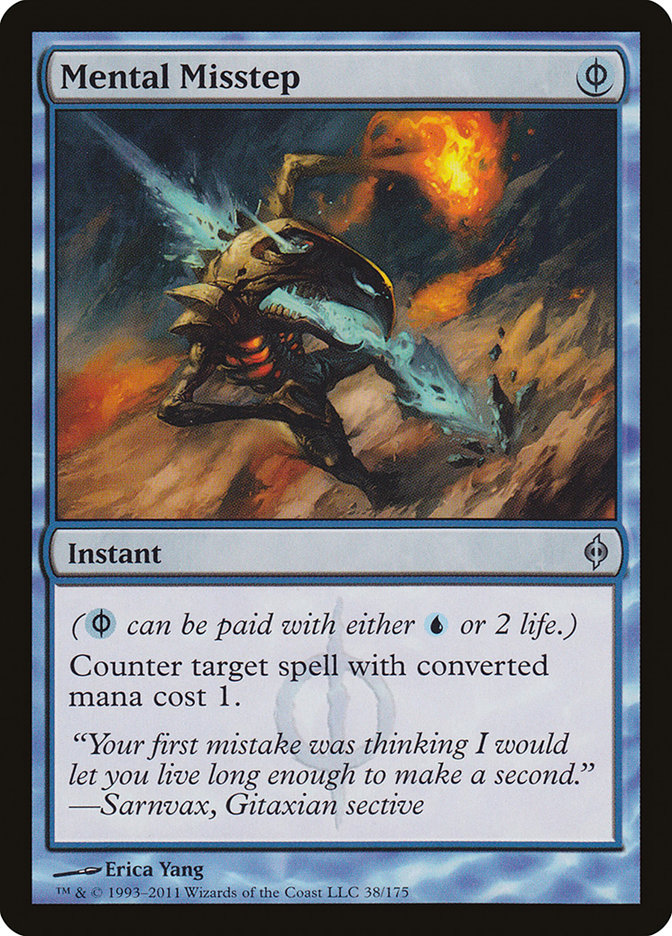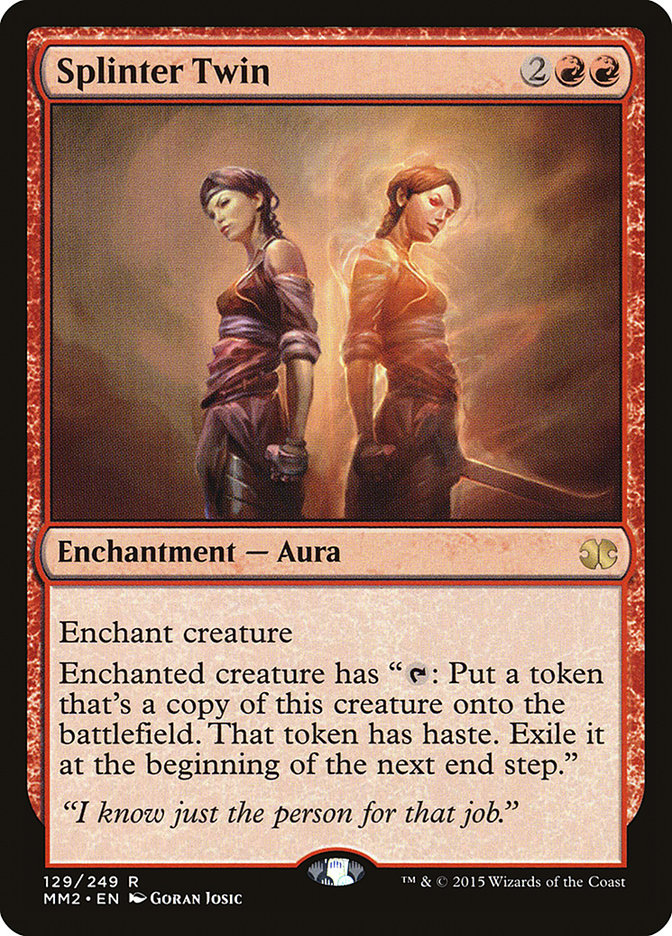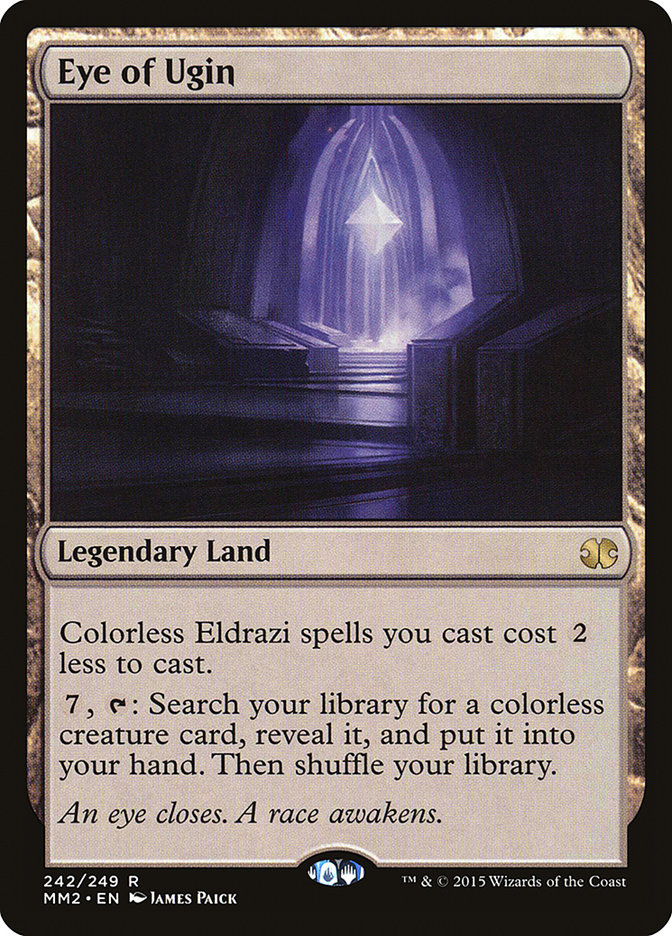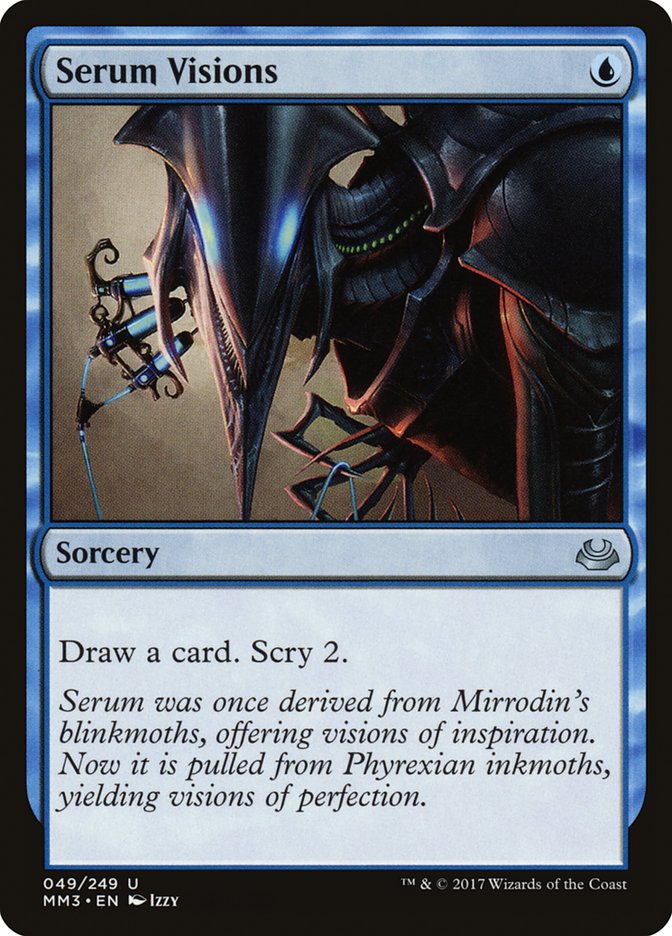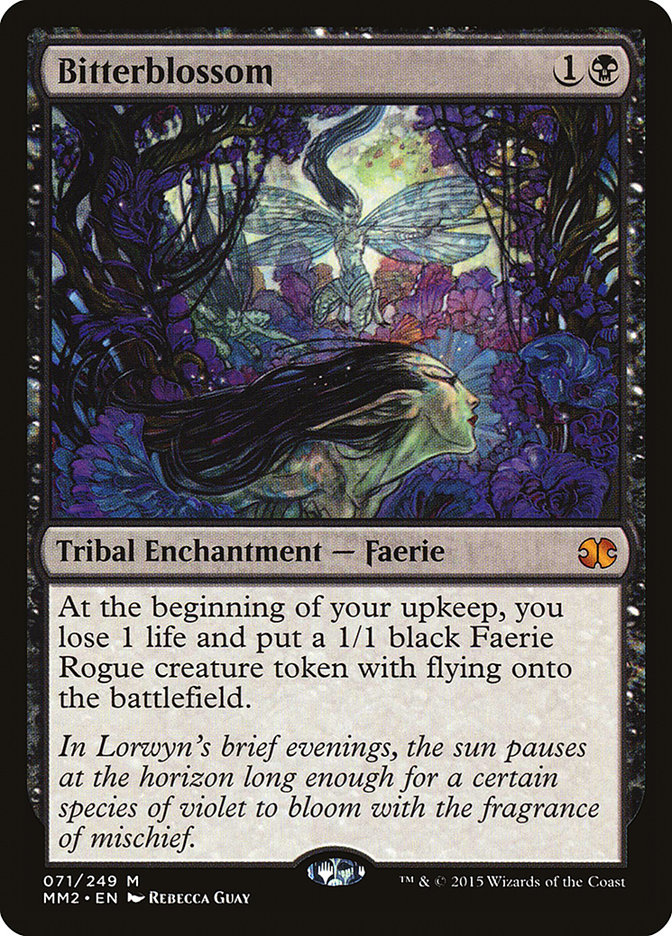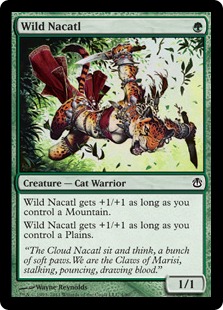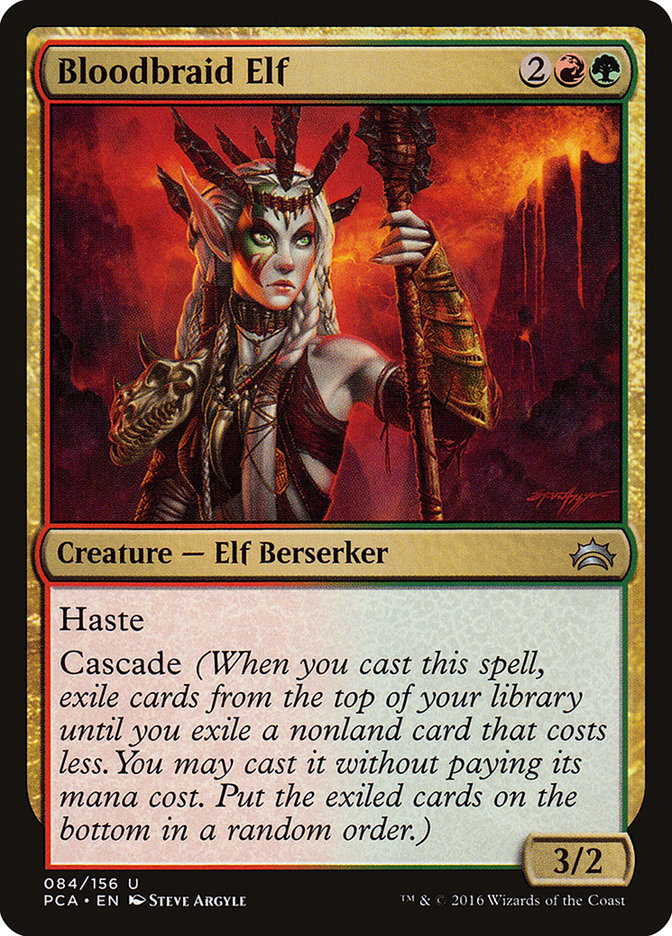
Can we have an honest discussion? Specifically, one about the Modern Banned List.
Banned lists in general seem to be a hot discussion topic among Magic players; the viability and consequences of bans, less so.
The announcement that Modern would be reintroduced to the Pro Tour, coupled with its extensive existing list, makes it one of today’s most heated issues to debate, and for good reason.
Different justifications have been given for the most recent handful of cards to be added to the banned list; meaning it’s easy to find reasons to ban cards, and it’s harder to predict what Wizards of the Coast would actually ban.
What Makes a Card Ban-Worthy?
It’s hard to really look at banning cards without first looking into why cards are banned. Looking at the reasons to ban cards generally give some insight into when someone may have a strong case for banning a card or archetype.
It’s easy to just say something is “too good,” but what does that mean? There are a few categories of “too good:”
- Enables a format-oppressing deck. Cards like Eye of Ugin fall into this category. During Eldrazi Winter last year, the only decks that existed were Eldrazi and anti-Eldrazi decks. Eye of Ugin was banned as a result.
- Limits diversity via omnipresence. These cards are easy to fit into almost anything and push entire archetypes out of viability. Think Mental Misstep and Deathrite Shaman.
- Pieces for consistent combos on Turn 1 or 2. Modern was originally pitched as a Turn 4 format, but we’re at the point in which we can accept certain fragile Turn 3 kills. Cards like Chrome Mox, Blazing Shoal, and Hypergenesis all have the ability to create decks that can win if the opponent doesn’t have an interactive spell on the first turn. That isn’t realistic in a format without access to Force of Will or other free interactive spells.
- Cards that create unfun and unpopular play patterns. This one is a bit harder to define, but the short version is that there are a small set of cards on the Modern banned list that weren’t necessarily oppressive, but they created situations that pushed players out of the format via unavoidable feel-bad situations.
- Tools with effects too powerful relative to their mana cost. This was an extra category to give a nod to Skullclamp, Treasure Cruise, and their kin.
There are a couple of cards that fall just outside of these rules, but a majority of cards fall into one of the categories listed above.
The Pros and Cons of Bannings
So what happens when a card is banned? For Wizards of the Coast to pull the trigger on a ban, the benefits of the ban have to outweigh the negatives.
To lay out the obvious, removing a card from the format is going to remove something toxic from sanctioned play. For a majority of players, this means never having to deal with a toxic element of Modern ever again. On the flipside, there’s a group of Modern players who were playing with the main offender and will be upset that their favorite cards are being banned. Outside of any feel-bads associated with people’s cards becoming illegal, there’s also the financial fallout to account for when banning cards.
Looking at it on a more macro level, I quote an article I wrote a few months ago when Aetherworks Marvel got the boot from Standard:
The issue lies in the fact that, even while banning oppressively powerful cards is a good thing for the format they’re being removed from, it carries repercussions on the rest of the format.
Imagine that each pillar of a Standard format is a so-called house of cards. The taller the house of cards, the more powerful the deck is. Every time a card is banned, the pillar it was supporting falls. When that pillar falls, another pillar of the format is now left unchecked by the previous big cheese.
The same is true in Modern. While the correlation isn’t entirely direct, the banning of Splinter Twin shortly before Pro Tour Oath of the Gatewatch paved the way to a host of incredibly oppressive Eldrazi decks that dominated the format until Eye of Ugin’s banning.
Projecting the good and bad that comes with any kind of banning is easily one of the hardest parts of Wizards of the Coast’s job. It’s easy to view the company as an omnipotent entity that knows how everything will shake out, but when it’s a dozen or so people trying to figure out entire formats, it’s easy for certain mishaps to happen, and doubly so with non-rotating formats.
Bans in Today’s Modern
So all of this is to come around to the part of the article many people are curious about: what’s the problem with Modern’s ban list? What should be added? Removed? That’s tough. Looking at the top decks, there isn’t a single archetype that is oppressively powerful.
This means that there are a few options for how to shake up the format via the banned list.
The first option involves banning something out of everything. No, not literally everything, but from a majority of the top decks. This way, it isn’t entirely clear what existing deck rises to the top in the aforementioned house of cards scenario, and there’s a period of time during which people are trying to figure out what cards to play. Imagine if all of the following cards were banned simultaneously:
That’s a lot of the format being removed at once. Sure, there are some things that I likely missed here, but the point is clear.
This avenue just isn’t realistic. The financial fallout caused by this move would likely result in the format dying overnight. It’s hard to convince people to invest their time, effort, and money into a format that Wizards of the Coast might wake up and nuke.
Another approach is having a banned list that rotates a bit more frequently. Our own Danny West had an article earlier this year suggesting a different approach to shaking up formats: spare the rare, ban the common. This could lead to people not being out hundreds of dollars if their playset of Scapeshift, Karn Liberated, or Snapcaster Mages get banned.
Instead, it would shake up the format by changing the potency of cantrips via banning Serum Visions, the versatility of removal with a Fatal Push ban, or the linearity of archetypes with bans on Cathartic Reunion and Boros Charm. It would be a more subtle touch, and would happen more frequently, but this also means the changes wouldn’t be as likely to last, helping create an artificial shift in power among archetypes from season to season.
The last option for shaking things up with card legalities would be to explore unbanning cards and reintroducing them into the format. There are a handful of cards for which this has been completely fine:
On the other hand, Wizards of the Coast is likely to be particularly careful on this front, as one of the most recent bans in Modern involved a card they’d previously removed from the banlist, only to have to re-ban it later on:
The most difficult aspect of unbanning cards from a parent company’s perspective is the cost/benefit analysis associated with taking the risk. Sure, Blazing Shoal might be worse than Become Immense in several cases, but is Blazing Shoal actually going to add anything good to the format? Remember that not everything on the banned list is there because it’s too good or format-warping. Some of the cards are there because they’re just so unfun to play games with or against that it’s better for the format that they simply don’t exist.
Taking that into account, there are a handful of cards worth considering for unbanning:
Of these, Jace, the Mind Sculptor is likely the closest to a hot take, so I’ll cover it first.
Jace, the Mind Sculptor is the best planeswalker ever printed. Period. Liliana of the Veil is close on some fronts, and Dack Fayden is efficient, but Jace, the Mind Sculptor takes the cake in terms of raw power.
It’s unlikely that Jace will ever be unbanned without some sort of supplemental product including him being released. During his tenure in Standard, he broke $100 and easily climbed back to triple digits post-banning. Becoming legal in Magic’s most popular competitive format would cause a surge in price that would make him incredibly hard to find, and that isn’t a situation that Wizards of the Coast wants to create.
After creating a price hike on an older and already sought-after card, there’s the risk that Jace ends up being too powerful for the format. Imagine how horrid it would feel to spend $400 on a playset of Jace, the Mind Sculptor, for it to just get banned a few months after it became legal again.
The checks and balances are there to make sure that Jace, the Mind Sculptor wouldn’t be particularly oppressive, but the risk associated with his printing and the financial woes that would follow make him logistically hard to justify returning to Modern.
Splinter Twin’s banning was originally labeled as a sacrifice made for the sake of format diversity. Now, with better removal spells (looking at Fatal Push specifically), better interactive shells (Death’s Shadow decks come to mind), and other U/R decks (Gifts Storm, for example), it feels like it’s just about time that Splinter Twin could make a comeback.
Bloodbraid Elf was sentenced for crimes committed by Deathrite Shaman. During Modern Jund’s heyday, Bloodbraid Elf was the first card to be banned, despite Return to Ravnica’s Abrupt Decay and Deathrite Shaman being the new tools given to the archetype. Once Deathrite Shaman was finally banned, Jund tapered off a bit. The same can’t be said for Bloodbraid Elf’s banning. Jund continued to chug along at the top tables of Modern events for a while.
The scariest aspect of Bloodbraid Elf being reinstated in the format is just the array of powerful cards that can be hit off cascade and have been printed since Bloodbraid Elf’s banning. Blightning was a pretty sweet hit back in the day, but can you imagine hitting Kolaghan’s Command? What if that Command buys back another Bloodbraid Elf? I’m getting nauseous just thinking about it.
Final Answer
To come full circle, what’s the problem with the Modern banned list? The primary issue is likely consistency. Wizards of the Coast has waffled on the “Turn 4 Rule” I alluded to earlier and has changed stances on a few cards in the past. It makes it hard to know if cards will stay legal or illegal, and makes it difficult to understand why certain cards get banned over other ones (I don’t think the entirety of R&D would be able to convince me that Gitaxian Probe is more offensive than Thoughtseize, but that’s an entirely separate article).
Past the slight consistency issues over the years, there isn’t much wrong with Modern’s current banlist. There are many different decks, and all of the colors are represented with multiple decks for each type of mana. It’s hard to complain, and if we’re lucky, Modern will maintain this balance indefinitely.



